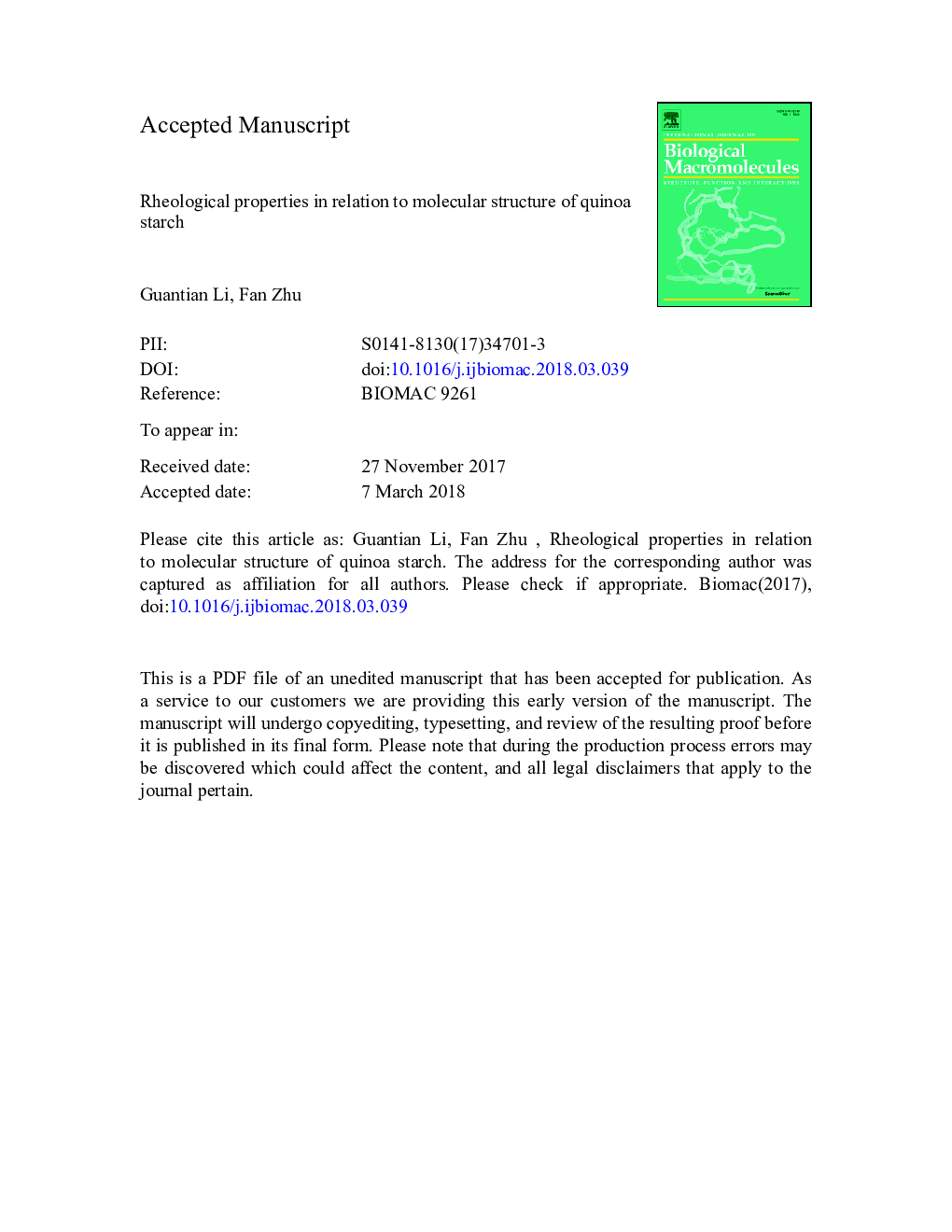| Article ID | Journal | Published Year | Pages | File Type |
|---|---|---|---|---|
| 8327431 | International Journal of Biological Macromolecules | 2018 | 35 Pages |
Abstract
Quinoa starch granules are small (~0.5 - 3 μm) with potentials for some food and other applications. To better exploit it as a new starch resource, this study investigates the steady shear and dynamic oscillatory properties of 9 quinoa starches varying in composition and structure. Steady shear analysis shows that the flow curves could be well described by 4 selected mathematic models. Temperature sweep analysis reveals that the quinoa starch encounters a 4-stage process including 2 phase transitions. Structure-function relationship analysis showed that composition as well as unit and internal chain length distribution of amylopectin have significant impact on the rheological properties (e.g., GⲠat 90 °C) of quinoa starch. The roles of some individual unit chains and super-long unit chains of amylopectin in determining the rheological properties of quinoa starch were revealed. This study may stimulate further interest in understanding the structural basis of starch rheology.
Related Topics
Life Sciences
Biochemistry, Genetics and Molecular Biology
Biochemistry
Authors
Guantian Li, Fan Zhu,
